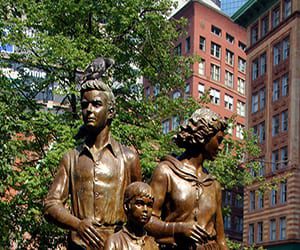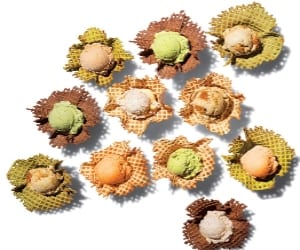Want to create an itinerary from this post?
Create a VisitWidget account and start creating your own sharable itineraries

Brian Wick is the executive director of the Cape Cod Cranberry Growers’ Association, representing 300 cranberry growers in Massachusetts. We talked with Brian about cranberry harvesting, agricultural tourism and a run-down of cranberry celebrations taking place this fall.
Tell us about your career and give us a summary of CCCGA.
I have worked in the cranberry industry for close to 30 years. Right out of college, I worked at Ocean Spray Cranberries in its grower relations department for 12 years. Starting out in agricultural research, I segued into other roles, including crop forecasting, analyzing crop production data, and managing a Geographic Information Systems for tracking cranberry acreage. I pursued internet project management for several years, where one of my clients was a cranberry company, so I never completely left the industry. Then I returned to cranberries full-time as the regulatory director at CCCGA. I have been here for 17 years, the last 7 as executive director.
CCCGA is a non-profit, membership-based organization representing approximately 300 cranberry growers of Massachusetts, farming 13,000 acres of bogs. Including the surrounding lands around the bogs, our growers maintain over 60,000 acres of open space in the Commonwealth. Factoring in both direct and indirect businesses, there are more than 6,900 jobs that rely on the Massachusetts Cranberry industry, contributing over $1 billion in annual economic activity. Massachusetts is the second largest growing region in the United States, representing about 23% of the total cranberry production.
Why is southeastern MA ideal for harvesting cranberries?
Cranberries are growing in Massachusetts in exactly the same place and manner that nature intended. This native wetland plant has been around since the last glaciers came through, thriving in the low sandy, acidic soils of our region. The plants need acidic (low pH) soil, an iron-rich source of water, and a prolonged chilling period (winter dormancy) in order to set fruit for the following season. They require periodic rainfall, adequate sunshine in the summer months and cool nights in the fall to bring on the dark, red color of the fruit. Southeastern Massachusetts has all of those growing attributes.

How do growers contend with climate change, droughts and energy prices? Can technology solve the challenges ahead for cranberry growers?
Cranberries have been cultivated as a commercial crop in Massachusetts since 1816. Over the last 200 years, a lot has changed. One constant has been a continued influx of innovation to face the ever-changing challenges of growing the crop. Today, growers are looking more than ever toward cutting-edge horticultural research, led by the UMass Cranberry Station in Wareham. Growers are investing in new technology and developing innovative tools and processes to combat climate change and to lower costs. They are also re-investing in their bogs to simultaneously make them more sustainable, both economically and environmentally.
Through a commitment to try new things, to collaborate and share ideas, and to look beyond our industry for possible solutions, Massachusetts cranberry growers have been able to withstand the challenges of our time and to plan for the future. Even though there are 300 plus growers, their mindset is one of unity and collaboration, working together as a single voice to solve problems. This way of thinking has proved successful for generations of growers and shows no signs of slowing down.
CCCGA’s cranberry bog tours are especially popular this time of year and so is agri-tourism. Tell us about your tours, and about other cranberry-themed activities this fall.
Visiting a cranberry bog, particularly during harvest is high on the list for many people. CCCGA offers harvest bog bus tours every weekend in October. Also, several growers offer tours on their farms. The CCCGA website has a listing of all of these opportunities, as well as where to buy fresh cranberries in season. We are planning to offer more opportunities throughout the year to experience cranberry bogs in various ways.
Beyond the tours, there is also a cranberry day at the bog at Patriot Place in Foxborough on October 15, hosted by Ocean Spray Cranberries. In addition, a new event this year is CranFest 2022, a 2-day celebration of our native berry, November 11-12 at Plimoth Patuxet Museums in Plymouth. We are collaborating with Plimoth Patuxet for the first time and will have a variety of events including a cranberry recipe contest, games and crafts for children, vendors, cranberry products to taste and buy, educational sessions, live music, and more.

The combination of foliage and cranberry bogs in southeastern Mass offers a stunning palette for visitors. Do you have a particular favorite place you recommend for our readers?
If one has the opportunity to see cranberry harvest anywhere in southeastern Massachusetts, Cape Cod or Nantucket, it’s a must-see, particularly the iconic wet harvest, which represents about 96% of the production. There is nothing like a sea of red berries, glistening on a flooded bog – the sight of it never gets old. Visitors can learn where bog tours are offered on our website. We also have an online map that points to some of the major roads with numerous bogs, where visitors might get a chance to catch a harvest from the road.
Thank you, Brian.
For more information visit www.cranberries.org
Want to create an itinerary from this post?
Create a VisitWidget account and start creating your own sharable itineraries



